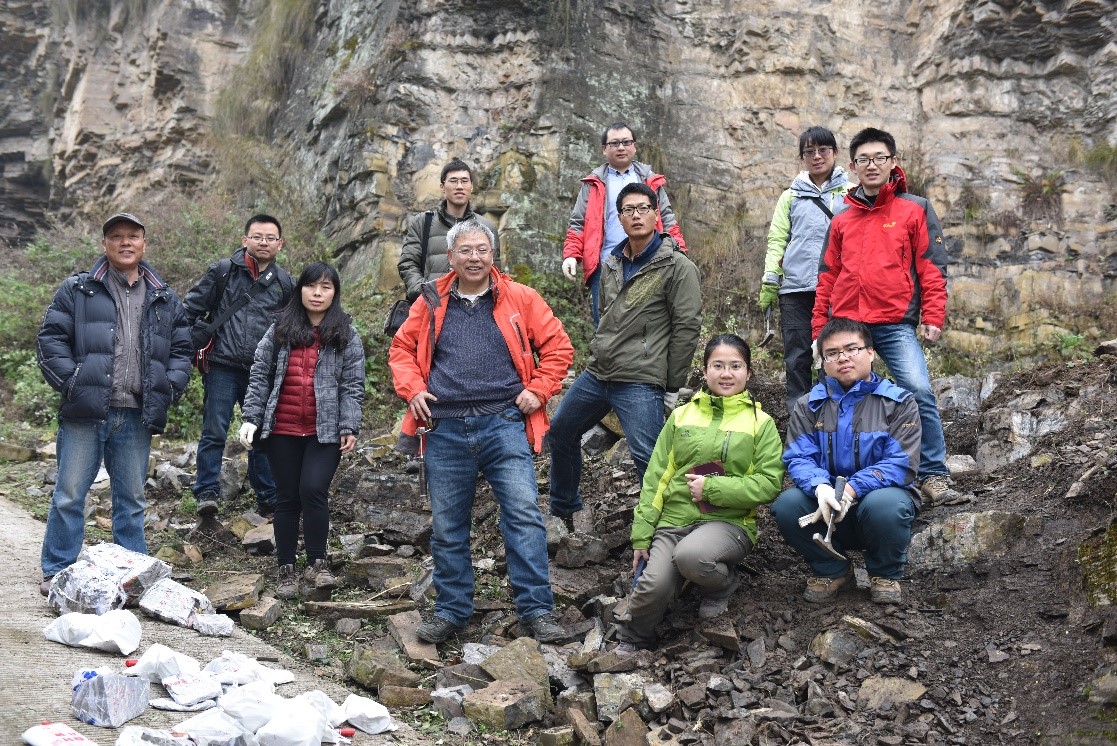
The Research Group on the Neoproterozoic-Paleozoic Transition (NPT) at NIGPAS focuses on research of the Earth-Life System (ELS) evolution through multidisciplinary approach, covering the stratigraphy, origin and early evolution of animals, paleoecology, sedimentology, geochemistry, biogeochemical cycling and paleoenvironmental changes during NPT.
The group is led by Prof. ZHU Maoyan, who is a world leading scientist in Neoproterozoic and Cambrian bio- and chemo-stratigraphy, and paleontology. Prof. ZHU is one of the voting members of both Ediacaran and Cambrian subcommissions, and the chair of the working group on the Ediacaran-Cambrian boundary of Cambrian Subcommission. His research was awarded the Group Prize of Brilliant Contribution (Qiu Shi Sciences & Technologies Foundation, 1997), Distinguished Young Scholars (NSFC, 2007), Yin Zanxun Award (Paleontological Society of China, 2009) and the International Corresponding Member of Academy of Science G?ttingen (2013).
The group currently consists of 2 research professors, 2 associate research professors, 4 assistant research professors and several postdocs and postgraduate students. Each member of the group has his (her) own specified research area:
Dr. LI Guoxiang (research professor) — Cambrian small shelly fossils (SSF) and stratigraphy;
Dr. ZHAO Fangchen (associate research professor) —taphonomy and paleoecology of the fossil-lagerst?tten, Cambrian soft-bodied fossils mainly from the Chengjiang and Guanshan biotas;
Dr. Lü Miao (associate research professor)—chemostratigraphy and sedimentary geochemistry;
Dr. YIN Zongjun—Ediacaran Weng’an biota and evolution of early animals;
Dr. CHEN Bo— sedimentary geochemistry, reconstruction of paleoenvironment;
Dr. LUO Cui— sponges and carbonate sedimentology.
Recent research projects of the group funded by NSFC and CAS include studies on the Ediacaran Weng’an biota, Cambrian small shelly fossils, Chengjiang biota, taphonomy of the fossil-lagerst?tten, integrated stratigraphy of the Crygenian, Ediacaran and Cambrian. A national basic research program (“973 Program”), ‘From Snowball Earth to the Cambrian Explosion: Coevolution of life and environment around 600 Myr’ funded by the Ministry of Science and Technology China (MSTC) and led by Prof. ZHU, incorporates more than 30 scientists from 8 domestic institutes and universities, and a number of international collaborators all over the world. Recent research achievements of the group could be highlighted as:
1) discoveries of the centimeter-sized multicellular organisms from the Lower Mesoproterozoic (1.56 billion years old) of North China;
2) discovery of the earliest known sponge-grade animal and metazoan-type embryos from the Edicacaran Weng’an biota, South China;
3) geochemical evidences for progressive oxygenation of ocean coincident with the origin and early evolution of animals;
4) proposed hypothesis for a new coevolutionary mechanism of the Earth-Life System at the Neoproterozoic-Paleozoic Transition.
.....CONTENTS OF PALAEONEWS NO.3......
Download:
